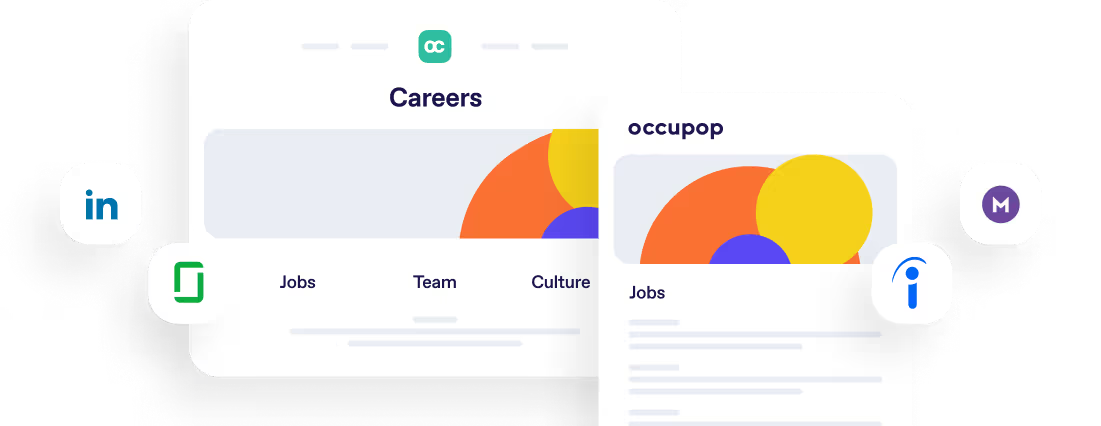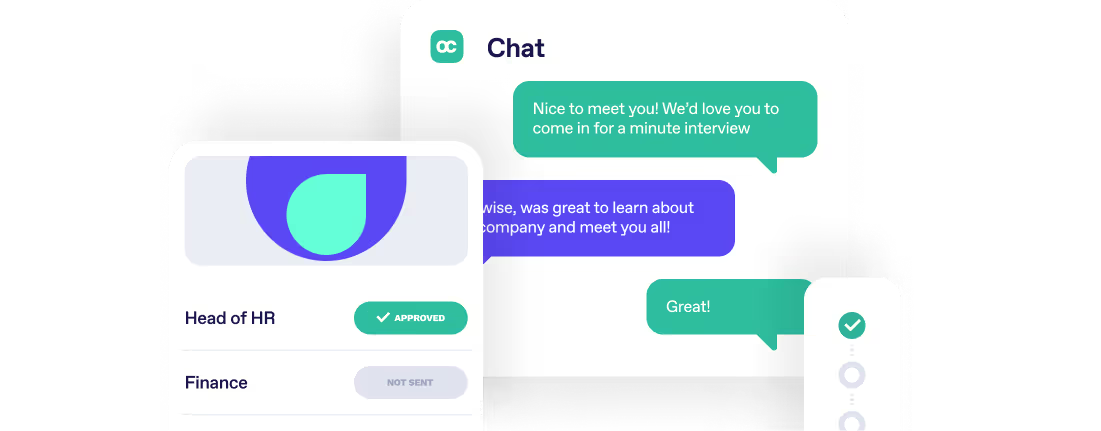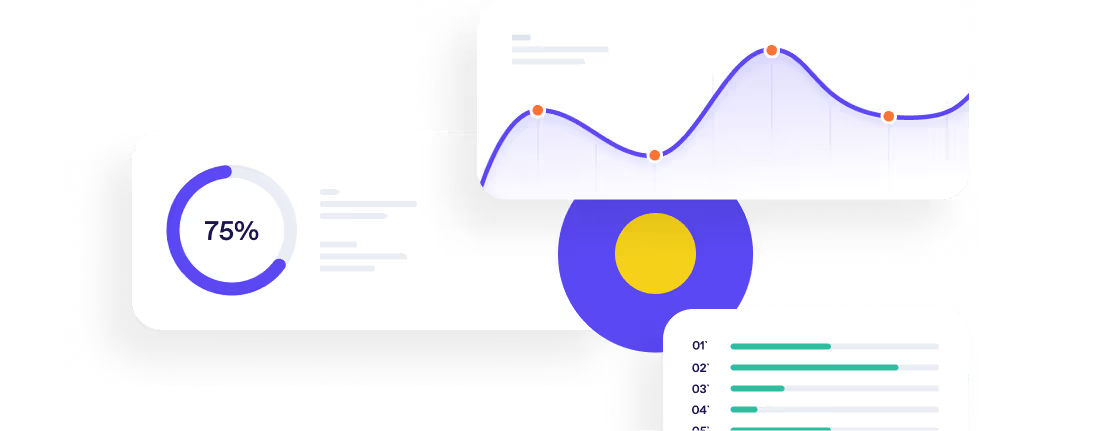The Key HR Metrics You Should Be Measuring as an SME



The best way to do this is by tracking a number of key HR metrics of particular relevance for small to mid sized companies that are growing. In this article, we'll cover what those key metrics are and how to measure them in order for you to improve your hiring process as well as achieve optimal performance levels that can help you improve your processes so you can successfully scale up.
1. Time to Fill
One of the most important metrics for SMEs is time to fill. This metric measures how many days it takes to fill an open position, from the date you begin searching for candidates all the way through when you make that person an offer, and everything in between.
Time-to-fill is a measure of the number of days between the start of your recruitment process and when you hire a new employee. It’s important to track this metric because it gives you insight into how long it takes for your team to find the right candidate for each position—and whether or not there are bottlenecks in the process.

2. Cost Per Hire
Cost per hire is the cost of recruiting, hiring and training a new employee. It’s important to measure your cost per hire because it helps you understand how much it costs your business to find and hire each new employee.
You can use this metric to:
- track the number of hires over time;
- evaluate how effective your recruitment strategy is at finding qualified candidates;
- understand how much time and money are being spent on each role; and lastly,
- determine whether or not the company should be increasing its headcount in order to operate more efficiently.
This metric shows how much it costs your company to hire one person. Tracking this information every time you make a job offer will help identify any areas where HR expenses are out of whack, as well as highlighting how effective various hiring strategies have been at filling open roles (for example, if referrals produce higher-quality hires than job boards do).
3. Candidate Quality Score (CQS)
As a SME, you want to hire the best people and build the best teams. But, how do you know if your candidate pool is of a high standard?
Candidate Quality Score (CQS) is a metric that measures a candidate’s likelihood of success in the role. CQS is calculated by looking at how well candidates score on your assessment tests and comparing this score to their performance before joining the company.
It’s important for companies of any size to have an understanding of what kind of person will be successful in their role and which ones will fail. If you don’t know what makes someone great at their job, then how can you ever hope to find them? The answer: CQS gives insight into exactly that question! By measuring candidates' ability before they join the team, it's possible for companies (of all sizes) to get an idea about whether or not someone will fit into the culture by looking at past performance data instead
INSERT-CTA
4. New Hire Turnover Rate
The new hire turnover rate is the percentage of employees who leave their position within the first year of being hired. This metric is an important indicator for SMEs, as it shows how well you’re retaining your new hires. A high new hire turnover rate can impact your business in a number of ways:
- Increased cost — It costs money to hire and train new employees, so each time an employee leaves early, that’s likely to cost you more than if they stayed for one year. In addition to actual monetary expenses (e.g., recruiting fees), there are also opportunity costs associated with hiring someone who doesn’t work out—namely lost productivity from having to delay hiring until another candidate is found or from having positions remain open while you search for the right person. Either way, it adds up quickly!
- Decreased productivity — An employee may not be able to hit all his/her milestones because they don’t have enough experience in his/her role yet—or worse yet, he/she might not even know what these are because it takes time before he/she feels comfortable enough with their responsibilities at work and knows how best perform them efficiently enough meet deadlines
5. Employee Referral Rate
The employee referral rate is the number of hires made from employee referrals divided by the total number of hires. It’s a great way to hire pre-screened candidates and people who already know your company culture.
If you have a high employee referral rate, it means that your employees are doing a great job of communicating their work experience at your company to their network. They may also be displaying high levels of loyalty and trust in their coworkers, which will help ensure consistent work quality among new hires as well as allow for more efficient onboarding processes.
An employee referral program can be one way to encourage this kind of behavior, but it won't do any good if you aren't tracking it!

6. HR Costs as Percentage of Revenue
A common metric to measure is the percentage of revenue that you spend on HR. This includes all direct and indirect costs, such as salaries and benefits, training expenses, legal fees, recruitment costs etc.
The formula to calculate this metric is:
[(Total HR Expenses/Total Revenue)*100%].
What is a good HR costs percentage? There is no easy way to answer this question. The total HR cost will vary considerably from industry to industry, company size, revenue level and will also vary depending on how developed the HR function is within your organisation. The key to success is to find a balance that works for you and your business. While analysing total HR costs as a percentage can be helpful, it’s important not to lose sight of your broader business goals. For example, a business priority may be to grow staff base considerably in the coming year to fuel long-term growth, even if there’s a negative short-term impact on your HR costs percentage.
7. Internal Promotion Rate
When you consider your talent strategy and hiring practices, it's important to make sure that you're investing in employees who can grow with your company. By hiring people who are a good fit for your company now and in the future, you'll be able to keep them around longer. Internal Promotion Rate is the measurement at which opened positions in an organisation are filled by internal hires.
The formula to calculate this metric is: [(Number of Employees Eligible for Promotion from Within/Total Number of Employees)*100%].
A hiring strategy focus on internal promotions possess certain benefits like:
- Lesser recruitment costs as compared to external hiring
- Lesser time is spent on the training and development
- The company and team already know the employee is a good culture fit, thus saving a lot of time and energy.

8. ATS Adoption Rate
Measuring how many employees are using your ATS system or hiring software is one of the most crucial metrics. An ATS adoption rate that's too low will indicate that:
- The system isn't being used effectively by employees and hiring managers
- There are issues with training and user experience
- Employees might not trust it or be comfortable using it
- Users are overwhelmed by complex features that they don’t know how to use.
A good ATS adoption rating is an indication of a good ATS fit for your organisation size. If you find that this score is on the low side it may be a good indication that you need to review the suitability of your current ATS set up for your business growth stage.
To help you with this process download the Ultimate ATS Buyers Guide complete with a review strategy to ensure you have all the features you need in an ATS system.
We hope that this article has given you some insight into how to keep track and measure the most important HR metrics for SMEs. Remember that these are just the beginning of what’s possible with HR metrics. As your business grows, so should your HR metrics and processes for measuring them. You should also consider ways in which you can automate HR reporting tasks so they become less time-consuming for you and more efficient for all involved parties involved in hiring new employees.
INsert-line
Looking for a recruitment software built for the needs of SMBs? Meet Occupop
Occupop is a beautifully simple recruitment software built for small and medium businesses. We empower our customers to become great at hiring through our smart hiring technology and suite of solutions that almost anyone can use. So whether you're a team of five or fifty, it only takes a few minutes to onboard your team members, set permissions, and start recruiting. If you think Occupop could be a good small business recruitment software solution for you, try it out today with a free 14-day trial.
Summary Points
The Key HR Metrics You Should Be Measuring as an SME
Ensure to track these key metrics of particular relevance for small to mid sized companies that are growing:
- Time to Fill
- Cost Per Hire
- Candidate Quality Score (CQS)
- New Hire Turnover Rate
- Employee Referral Rate
- HR Costs as Percentage of Revenue
- Internal Promotion Rate
- ATS Adoption Rate
Simple. Beautiful.
Recruitment Software.
HR updates sent straight to your inbox
You might also like...


Manage your entire hiring process simply, from engagement to management, hiring and onboarding







Simple. Beautiful.
Recruitment Software.
Recruitment Software.






